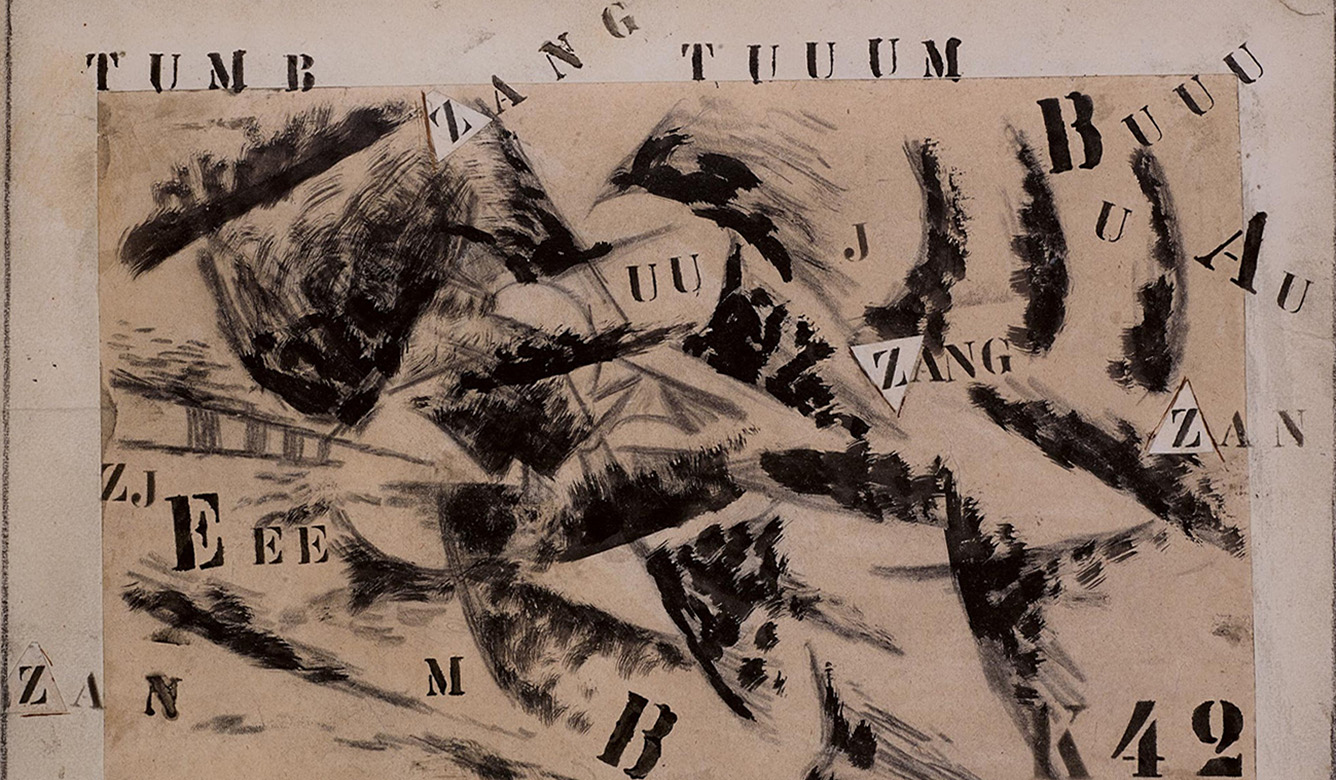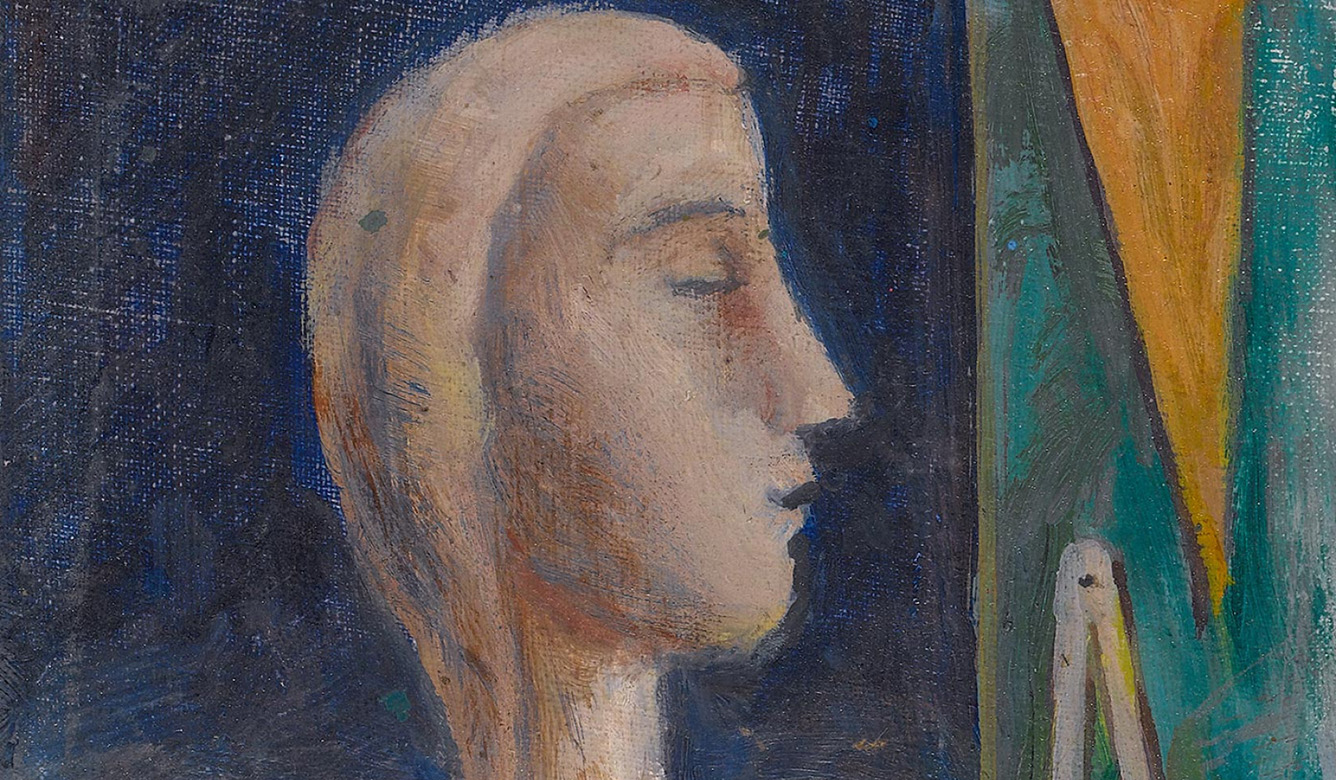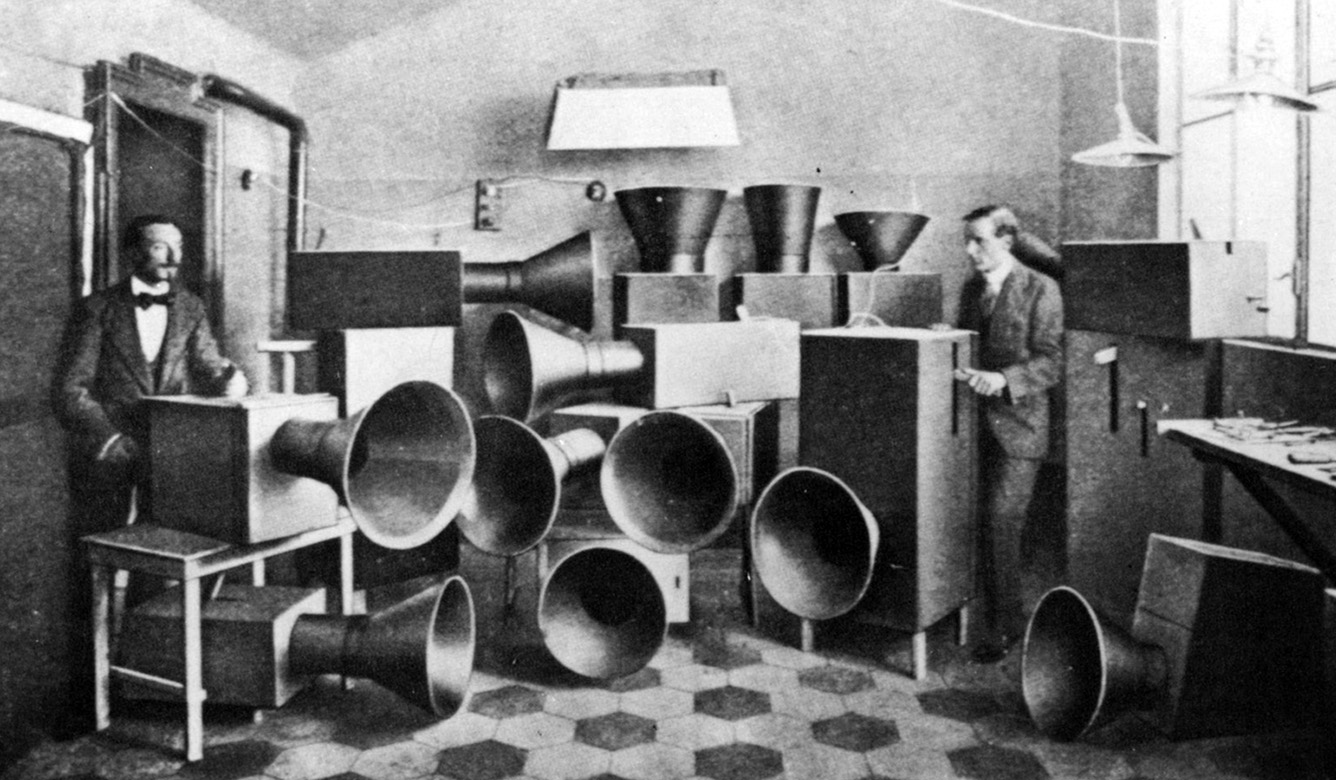
Estorick-led sessions for key stages 3 – 5, support creative learning across the curriculum. While looking at the artworks, students will exercise their skills in language, history and geography as well as visual literacy, engaging in creative and enjoyable projects.
Handling of materials, additional photographs, manifesto facsimiles and sound recordings can all be used to bring the sessions to life and to support the learning outcomes. Students can record from first-hand observation in the galleries, whilst being encouraged to use their imagination.
Discover our offer for Key Stages 3 - 5

Words in Freedom
Cross-curricula KS3 - 5
In this workshop learners will have the chance to get a general overview of the Futurist movement with an emphasis of experimenting with language. The talk will explore the works of major Futurist artists such as Umberto Boccioni, Carlo Carrà and Gino Severini. Students will create their own pieces inspired by Carlo Carrà’s Atmospheric Swirls - A Bursting Shell (1914), where he experimented with language drawn from Marinetti’s poem Zang Tumb Tumb.

Still Lifes: Uncovering Meaning
Art and Design KS3 - 5
Focusing on still life compositions by Giorgio de Chirico, Gino Severini and Giorgio Morandi, this session explores how artists choose and arrange objects, as well as use colours and techniques in order to construct stories and meanings, and to reveal emotions. The discussion will direct students to observe the impact these choices have on the viewer, as well as the symbolic values of the chosen objects and the stories they can tell when brought together. In the practical activity, pupils will begin to experiment with still life composition and the symbolic use of colour. Working in groups or independently, they will be invited to choose from a selection of everyday objects, arranging them in order to tell a story. They will reproduce their compositions on paper through drawing or collage.

The Art of Noise
Music KS3
Taking the artworks of Giacomo Balla and Luigi Russolo as its starting point, the talk will explore the Futurists’ interest in the noises of the modern world. They attempted to convey sounds, from the human voice to explosions, through visual representations. Russolo was one of the first noise music experimental composers. He designed and constructed noise machines in order to capture the dissonant sounds of modernity. Students will then be invited to comment on the relation between sight and sounds, examining how colour, tone and shape can be used for expressive and symbolic purposes. In the practical activity students will develop drawing and mark-making techniques, using original Futurist sounds as inspiration.